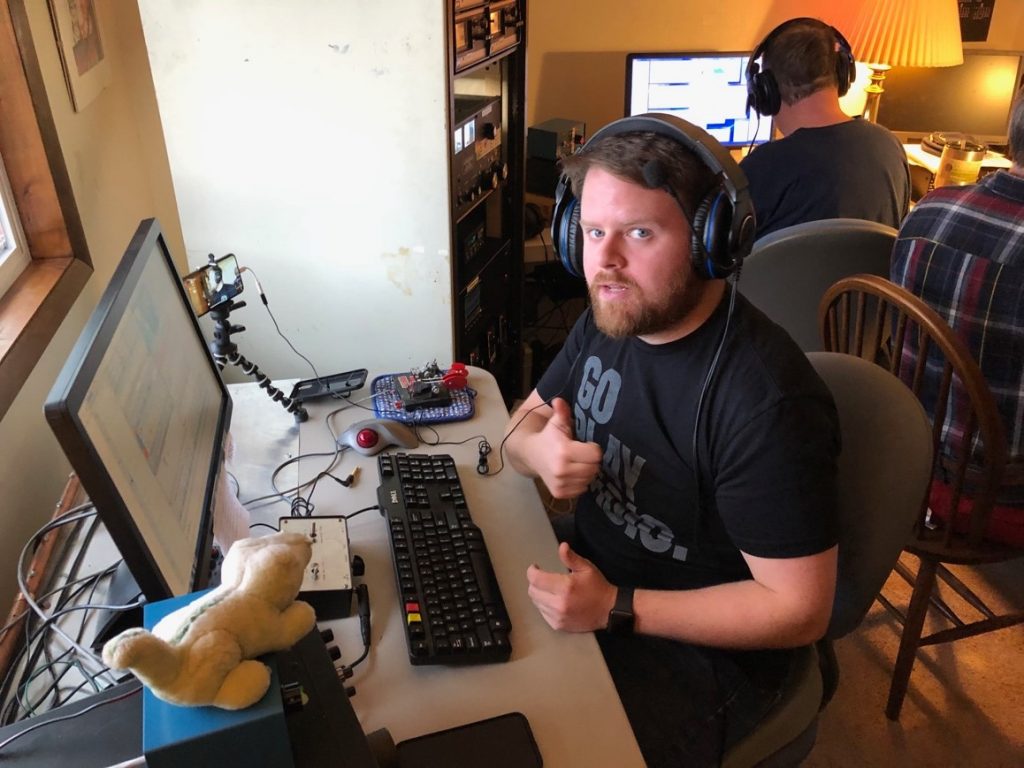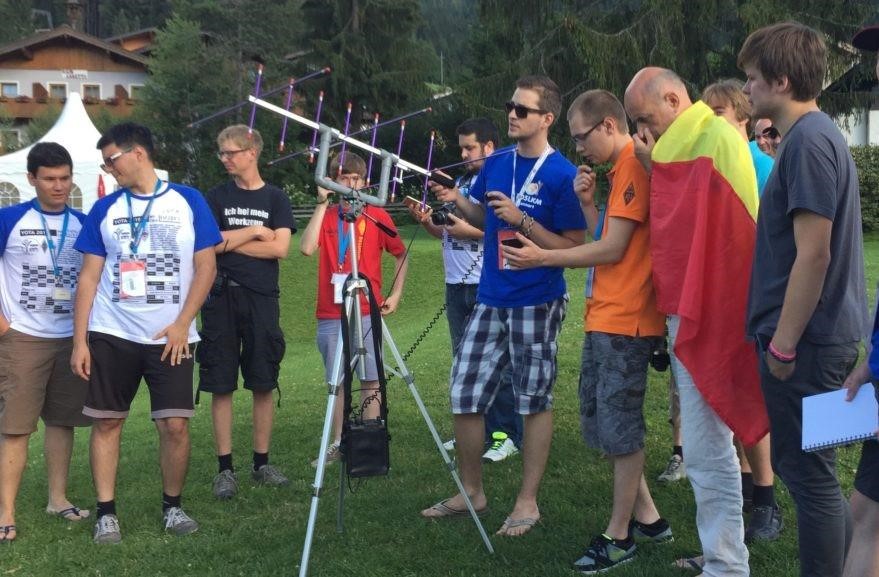A long-heralded cry in the world of Ham radio is the call for younger Hams.
“We need more youth! Our ranks are dying off, and there’s nobody coming up to replace them! What will happen to Ham radio?”
It’s not a new phenomenon. Jazz music, king of the airwaves from the 1930s through the mid-1950s, took a real hit when rock ‘n’ roll came along. By the late 1960s, most younger musicians were plugging in electric guitars and trying to play like Jimi Hendrix and Sly and the Family Stone; they didn’t want to play jazz in small nightclubs. By the mid-1970s, jazz disappeared for a while.
Trying to recruit younger folks into our hobby has been a topic of discussion for decades. Many well-intentioned clubs try to recruit into their ranks, only to be disappointed with the overall results. I was one of 12 students in a licensing class at my local library in the early 1980s; I was the only one who actually got a license.
Yet, there are a significant amount of “younger” Hams out there. To find out what they’re up to and how to reach them, I contacted Sterling Mann, N0SSC. He’s a longtime youth advocate in Ham radio and the newly-appointed IARU Region 2 Youth Liaison, as well as president of the Young Amateurs Radio Club (YARC). Sterling graduated from Missouri University of Science and Technology in 2014, majoring in electrical engineering with an emphasis in electromagnetics. He’s the co-founder of Youth on the Air and a former ARRL Youth Editor. And if that wasn’t enough, he also runs a YouTube channel and blog (n0ssc.com) to bring younger perspectives to the hobby.

OAB: Sterling, from your experience, what are the main ways younger people get introduced to Ham radio?
SM: I think the most common ways youth get interested is through their family or scouting. Most young Hams I’ve met have that in common.
It’s not a perfectly clear picture, but in many of my writings I mention that young Hams tend to have the “knack” in one way or another. Many of the youth in YARC are like this, having other interests like programming, radio control, and circuit building. Ham radio comes up frequently on sites like Hack-a-day, Hacker News, many forums on the online social platform Reddit, and occasionally in mainstream media. There’s a lot more exposure out there, which is what it takes to get someone who already has a technical mind to look into it a little further.
OAB: There’s a perception that younger Hams want to do all the “newer/internet-based” Ham radio and aren’t interested in doing “traditional” Ham radio. In your experience, how accurate is that?
SM: I don’t think it is very accurate. Adoption of new tech and internet-based integrations is done across the age demographic. EchoLink is used extensively by young Hams, not because it’s internet-based but because it’s free and easy to use. The same can be said for remotely-operated stations, either ones hosted privately or through services like RemoteHamRadio.
On the other hand, many young people also participate in more traditional operating aspects like contesting, DXing, satellite operating, and fox hunting. I think everyone has their own unique niche within the hobby, so it’s hard to say that any certain “type” of Ham radio is better at getting kids into it.
Naturally, younger people are more familiar with modern technology, so anything that integrates that with Ham radio will be a banger. That’s why I’m really into the thought of getting Ham radio into live-streaming platforms meant for video games like Twitch and YouTube Live. But the bottom line is, you can ask any Ham what they want to do in Ham radio and get the same answer—they want to have fun!
OAB: What are the biggest obstacles younger Hams encounter in their pursuit of Ham radio fun?
SM: The largest obstacle, frankly, is other Hams—bullies, gatekeepers, and holier-than-thou’s. A lot of young and new Hams get shooed off the air rather than embraced. The large generation gap between youth and the average Ham demographic is another social obstacle, even though one would think the common technical interest is enough to provide a bridge. Don’t let fools and trolls get you down. There are a lot of bullies in Ham radio, just like other avocations, and they can really decimate one’s interest in the hobby. Ignore them; there are a lot of Hams who enjoy being mentors and are open to all forms of Ham radio.
Cost is always another big item, but many young people I’ve known in the last 15 years have been recipients of donated and loaned equipment. If you’re out there sitting on stacks of Ham radios, think about giving them to a kid!
OAB: What are some ways older Hams and clubs can get younger Hams involved?
SM: There are lots of things they can do! Answering this question has been my main task lately, being a core point in a lot of my ARRL Youth Editor articles and blogs.
What really sets the hook, so to speak, is observing another’s passion for Ham radio through a visit to a Field Day site or on a YouTube video. The YouTube channel Ham Radio Crash Course runby Josh Nass, KI6NAZ, regularly has visitors thanking him for inspiring them to get into the hobby. I’ve seen his audience demographics, and they’re not old fogeys!
OAB: Where do younger Hams congregate these days?
SM: Young Hams didn’t really congregate at all until recently. If anything, youth Ham groups were very fragmented. The only youth meetup I knew of was Carole Perry’s (WB2MGP) Dayton Hamvention Youth Forum. Groups like BARC-JR and other youth-centric radio clubs came up in a scattered fashion.
At some point the World Wide Web floodgates opened, spawning organizations like Young Amateur Communications Ham Team (YACHT), CollegeARC (now Collegiate Amateur Radio Initative), Young Amateurs Radio Club (YARC), Youth on the Air/Youngsters on the Air (YOTA), Illinois Young Hams (ILYH), and more. These groups have multi-faceted presences: a website; a Facebook group; Twitter; and often a Discord or Slack chatroom, YouTube channel, podcast, and so on. For YARC, the Discord chat is the core aspect of being in the club. It’s where everyone hangs out, 24/7, with text, voice, and video chats, bot integrations, custom emojis, and hundreds of young Hams.

OAB: How and where should Ham clubs focus their messaging to recruit younger prospective Hams?
Ham radio’s overall online presence is extraordinarily insular. You might be able to find a website for virtually every Ham radio club out there, but there’s next to no general publicity for Amateur Radio. I think we can do better there and start adopting tried and true marketing and publicity initiatives, maybe even spending a little more on advertising in the public space. This is why Field Day is so successful. Clubs are driven to inform the public, from posting flyers at their local grocery store to arranging a visit from local government officials. There’s no reason we shouldn’t be doing that all the time!
That’s something to keep in mind when you hear the tired advice of “get your club a website and a Facebook group.” While that works for your membership, it does nothing to spread your message outside of our own. Very few people will seek out your Facebook page or your website; You MUST be willing to do the footwork and go to where your audience exists. For a younger demographic, that means going to local Makerspaces, hacking clubs, high school and college robotics teams, computer science clubs, STEM-based classes, and of course Boy/Girl Scout troops, pitching Ham radio to them, just like you were a salesman making a sales pitch to a prospective client. You need to listen to what that group is interested in learning about and tailor your presentation to meet them halfway.
Give public demonstrations, similar to Field Day, regularly. While COVID has certainly had an impact on your club’s public presence these days, it can still be done safely or online. Gather email addresses of people who are interested, and then follow up with them regularly. Invite them to club meetings, put them on a mailing list and keep them regularly updated on all club activities and meetings.
Image is also important. Today’s young people are incredibly tech-savvy. It’s hard to make a pitch to them that Ham radio is serious technology if your club hasn’t updated their website’s design since 2001. Many rely heavily on their smartphones, so double check what your website looks like on an iPhone or Android. If you’re visiting a gathering of prospective younger Hams, appearance is credibility. Dress appropriately and make both your presentation and yourself stand out in a positive way.
Unless a person has a friend or family member who is already licensed, recruiting anybody into Ham radio takes a lot of work on the local level. Younger prospective Hams are tougher yet. It will require dedicated efforts for your club to go outside of your meeting space and take your message to them, multiple times. It will require you to follow up with interested people several times and a mentoring system. But as far as I know, Ham radio isn’t dying anytime soon. While an aging population, increasing spectrum demand, and new fees are threats, there are more Hams coming in than ever before. These new people may not be as active as previous generations, but I think they will be at the center of the next Ham radio boom.
Visit Sterling’s website, n0ssc.com, to read more of his youth-related content and contact him directly. Be sure to leave your comments below, and feel free to contact me with your thoughts as well.

